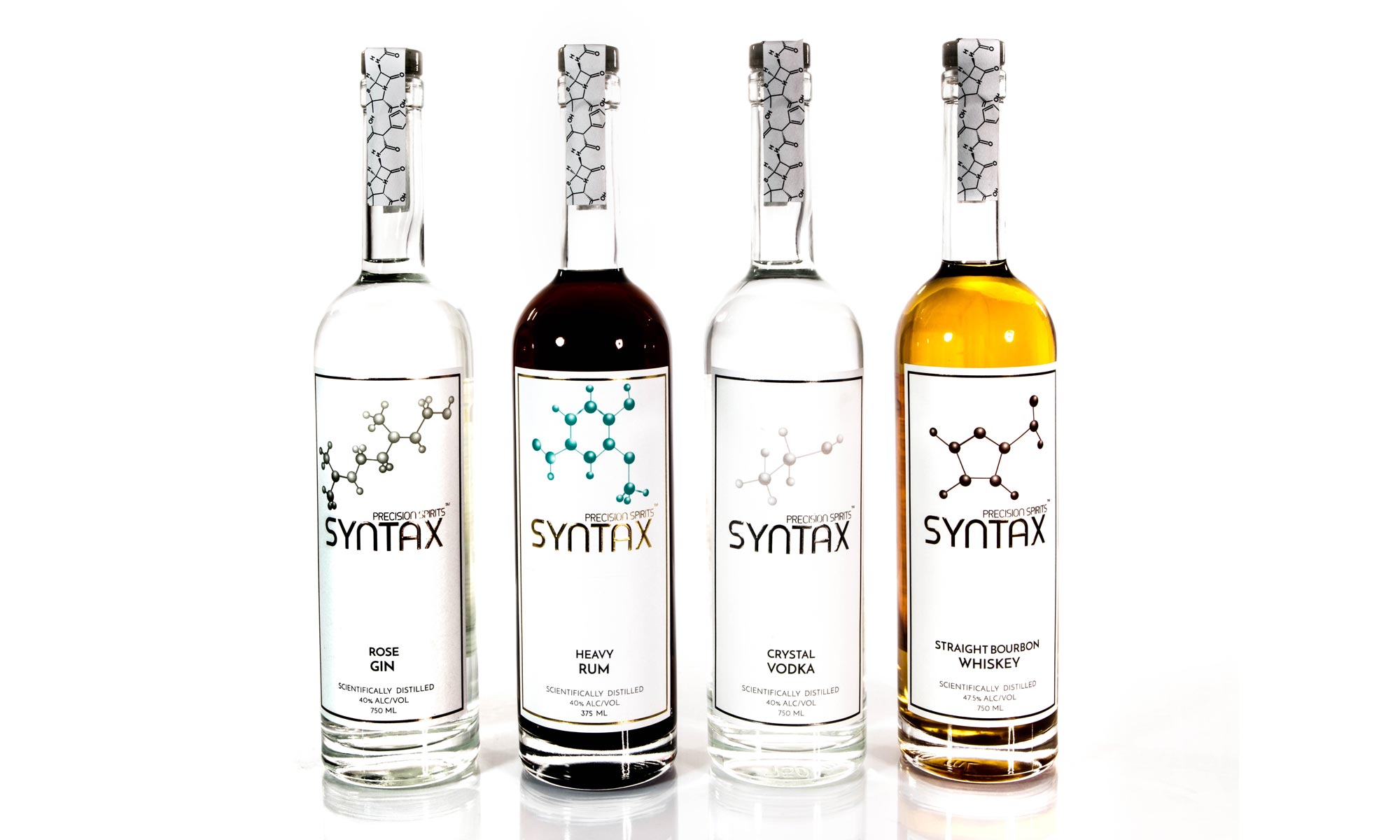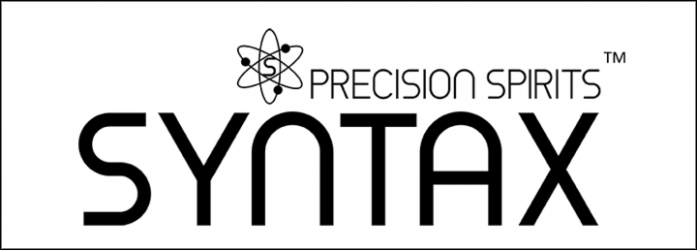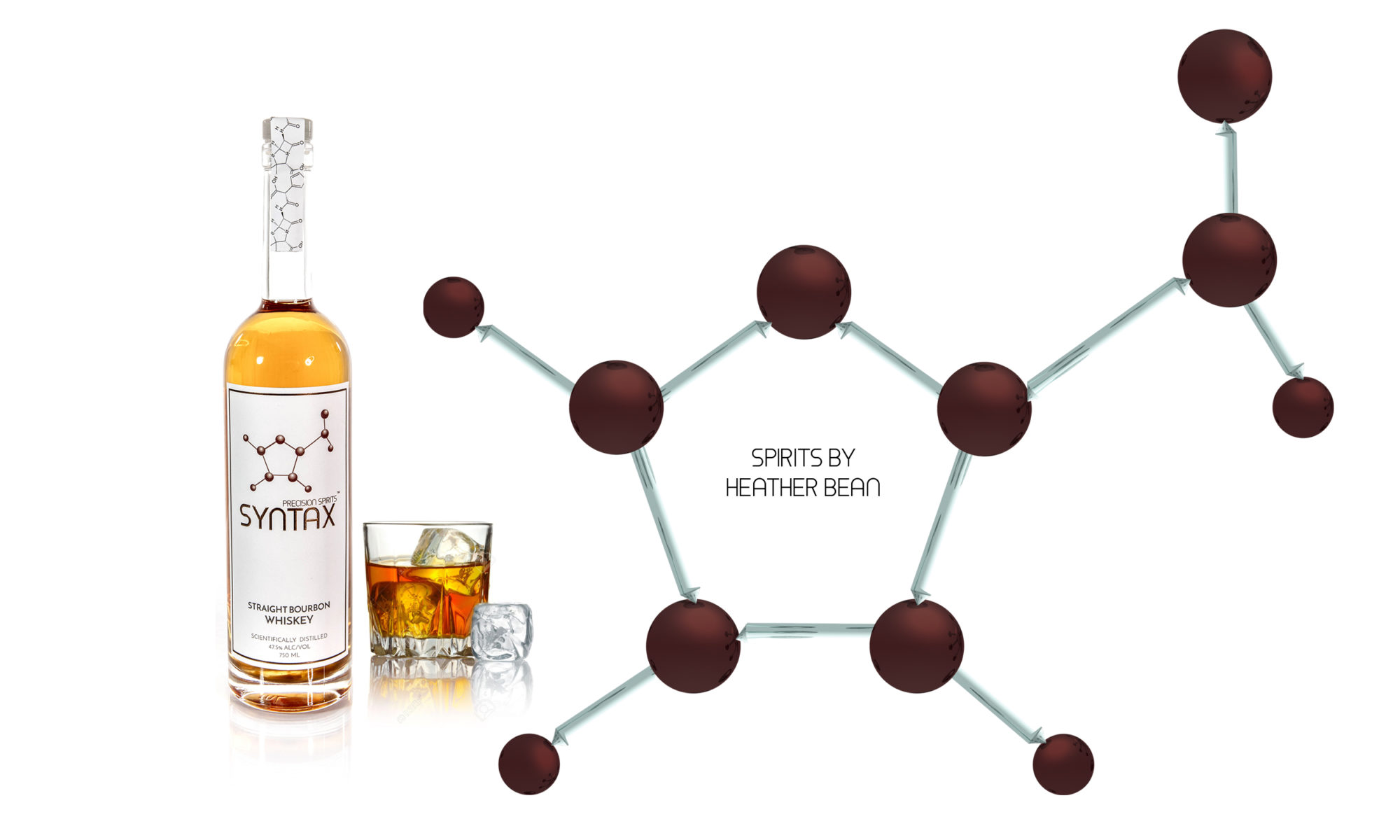In chemistry, an alcohol is any organic compound in which the hydroxyl functional group (–OH) is bound to a saturated carbon atom. The generic term alcohol generally refers to the primary alcohol ethanol (ethyl alcohol), the predominant alcohol in alcoholic beverages.
Among our frequently asked questions are: “What are those pretty molecules featured on Syntax’s spirits bottles?” and “Are those real molecules in spirits?”
Being good geeks, we’re proud to say that yes, the molecules featured on our bottles are indeed real molecules, and each one of them lends its unique character to the spirit that it’s featured on. Read on to learn more!
Furfural is the molecule featured on Syntax Straight Bourbon. Its chemical formula is C5H4O2 and it’s an aldehyde that originates from the barrels that the whiskey is matured in. It’s naturally reddish-brown and has an almond-like, grainy flavor. Its name is derived from the Latin word furfur, which means bran.
Ethanol is the molecule shown on Syntax Crystal Vodka. Vodka is nearly pure ethanol, or C2H5OH for our fellow chemistry geeks. The molecule also happens to be shaped like a dog, which is apt considering that many think of it as one of man’s (and lady’s) best friends.
Geraniol is the molecule that graces our Rose Gin. It’s a terpene alcohol with the chemical formula C10H17OH and has an aroma that most describe as rose- or geranium-like. It’s found in many floral oils, but most notably in rose petals, which feature prominently in our Rose Gin.
Vanillin is the molecule displayed on our Heavy Rum bottle. Vanillin is a phenolic aldehyde with the chemical formula C8H8O3 and is produced from the lignin in wood when barrels are charred. As you might expect, it has a vanilla flavor and aroma that it adds to barrel aged spirits, like our Heavy Rum.


